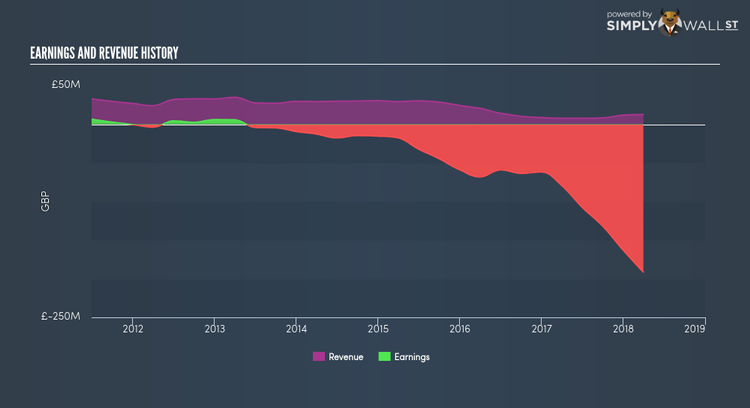GW Pharmaceuticals plc’s (NASDAQ:GWPH) Earnings Dropped -141.94%, How Did It Fare Against The Industry?

Examining how GW Pharmaceuticals plc (NASDAQ:GWPH) is performing as a company requires looking at more than just a years’ earnings. Below, I will run you through a simple sense check to build perspective on how GW Pharmaceuticals is doing by comparing its most recent earnings with its historical trend, in addition to the performance of its pharmaceuticals industry peers. Check out our latest analysis for GW Pharmaceuticals
How Well Did GWPH Perform?
I like to use data from the most recent 12 months, which annualizes the most recent half-year data, or in some cases, the latest annual report is already the most recent financial year data. This enables me to analyze different companies on a similar basis, using the latest information. For GW Pharmaceuticals, its most recent bottom-line (trailing twelve month) is -UK£191.34M, which, relative to the previous year’s level, has become more negative. Since these figures are relatively short-term, I have estimated an annualized five-year figure for GW Pharmaceuticals’s net income, which stands at -UK£40.43M. This doesn’t look much better, since earnings seem to have gradually been getting more and more negative over time.
We can further assess GW Pharmaceuticals’s loss by looking at what the industry has been experiencing over the past few years. Each year, for the last five years GW Pharmaceuticals has seen an annual decline in revenue of -15.44%, on average. This adverse movement is a driver of the company’s inability to reach breakeven. Has the entire industry experienced this headwind? Scanning growth from a sector-level, the US pharmaceuticals industry has been growing its average earnings by double-digit 11.92% in the previous twelve months, and a less exciting 9.59% over the past five years. This means that whatever uplift the industry is profiting from, GW Pharmaceuticals has not been able to reap as much as its average peer.
What does this mean?
GW Pharmaceuticals’s track record can be a valuable insight into its earnings performance, but it certainly doesn’t tell the whole story. With companies that are currently loss-making, it is always difficult to forecast what will occur going forward, and when. The most valuable step is to examine company-specific issues GW Pharmaceuticals may be facing and whether management guidance has steadily been met in the past. You should continue to research GW Pharmaceuticals to get a better picture of the stock by looking at:
Future Outlook: What are well-informed industry analysts predicting for GWPH’s future growth? Take a look at our free research report of analyst consensus for GWPH’s outlook.
Financial Health: Is GWPH’s operations financially sustainable? Balance sheets can be hard to analyze, which is why we’ve done it for you. Check out our financial health checks here.
Other High-Performing Stocks: Are there other stocks that provide better prospects with proven track records? Explore our free list of these great stocks here.
NB: Figures in this article are calculated using data from the trailing twelve months from 31 March 2018. This may not be consistent with full year annual report figures.
To help readers see pass the short term volatility of the financial market, we aim to bring you a long-term focused research analysis purely driven by fundamental data. Note that our analysis does not factor in the latest price sensitive company announcements.
The author is an independent contributor and at the time of publication had no position in the stocks mentioned.

 Yahoo Finance
Yahoo Finance 